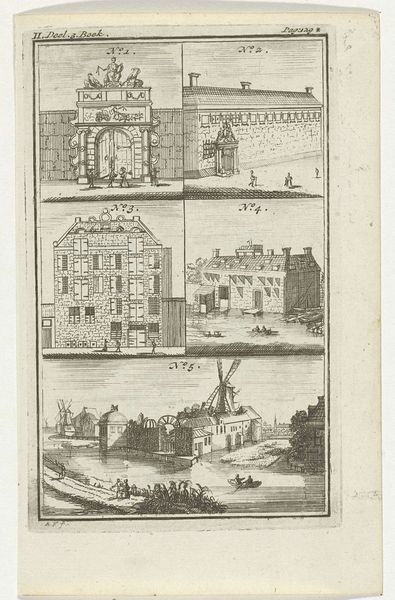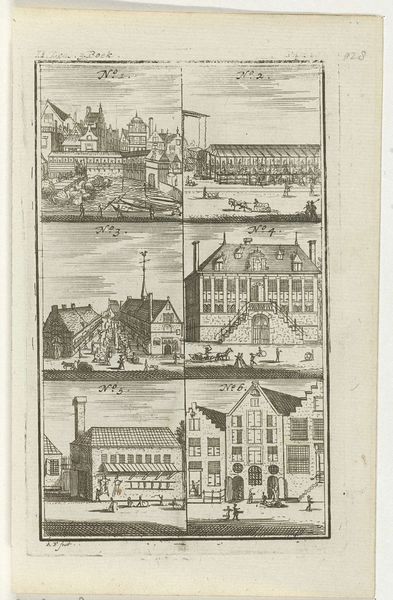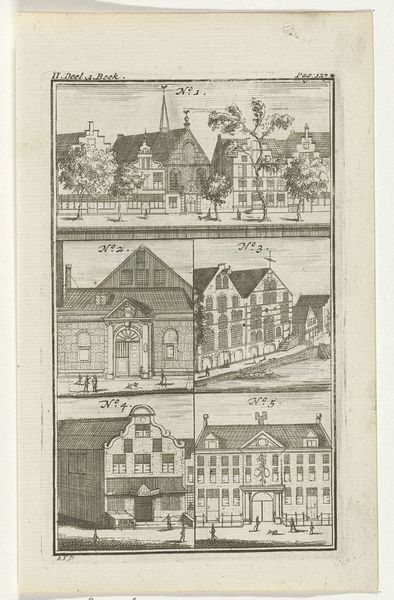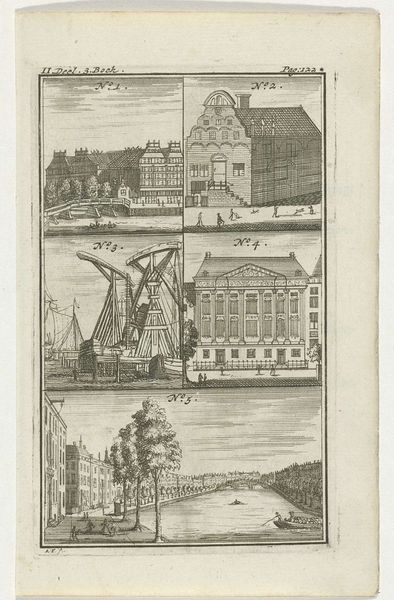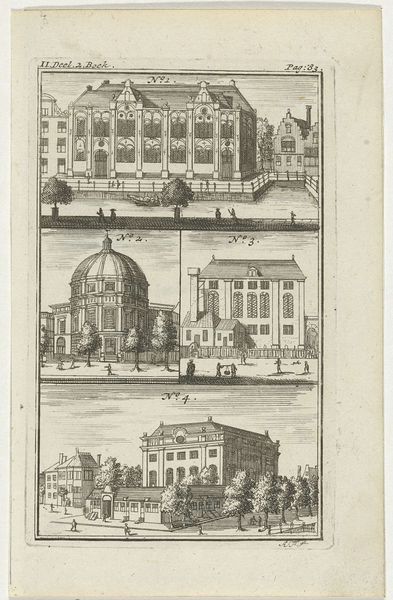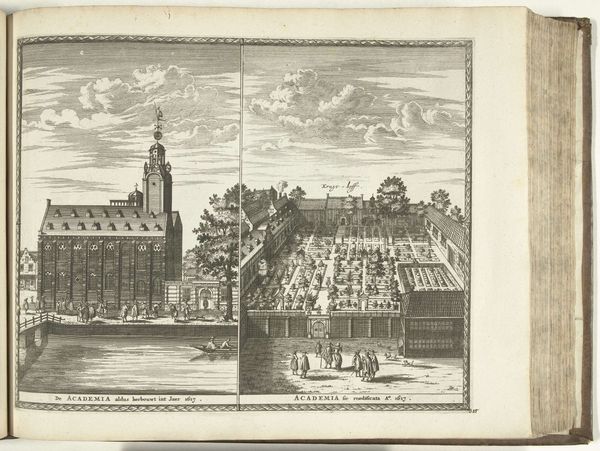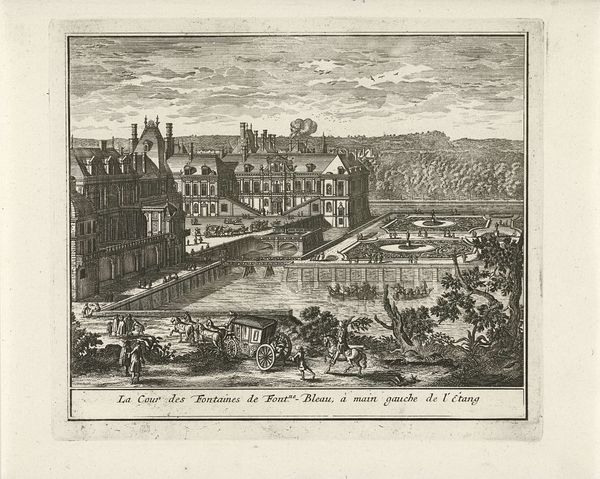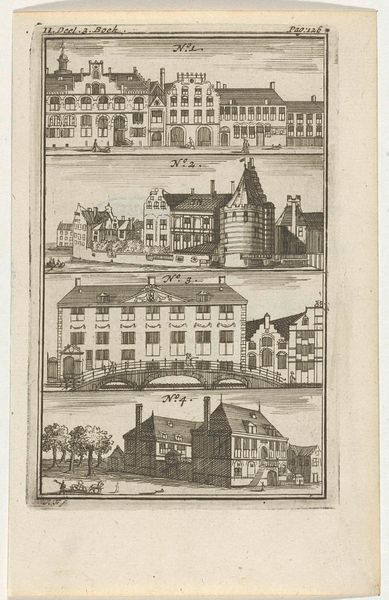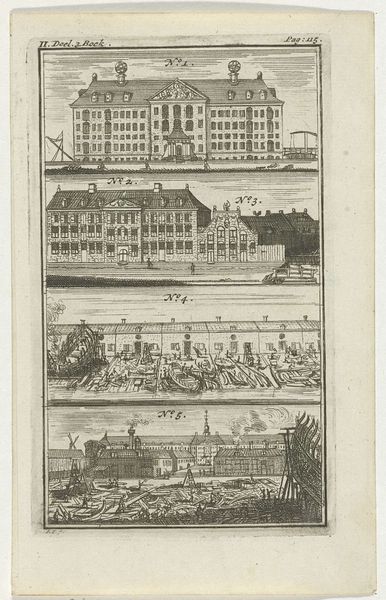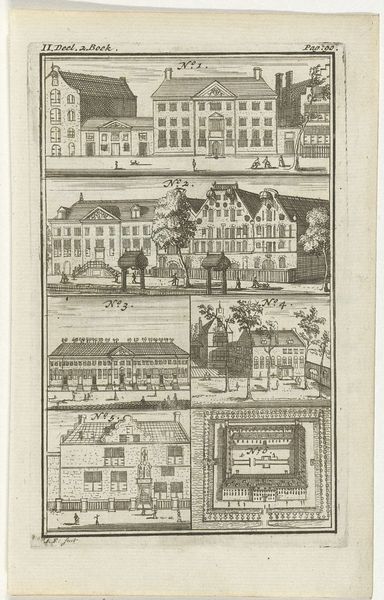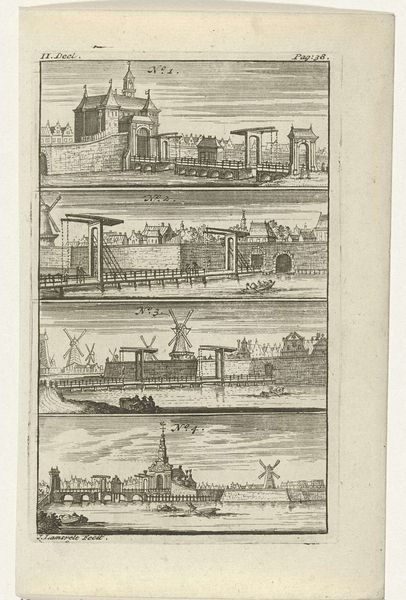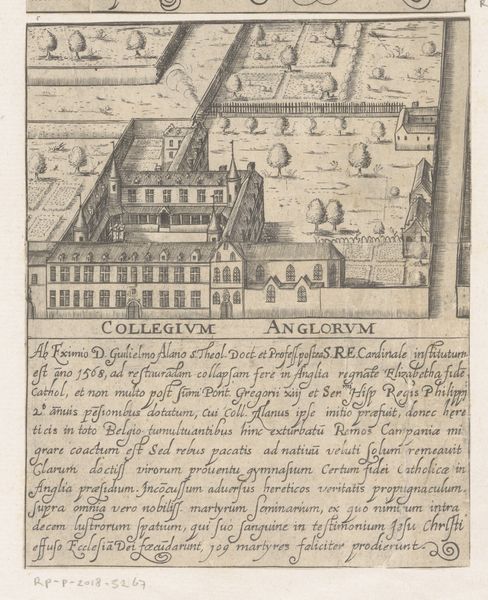
drawing, print, pen, engraving, architecture
#
drawing
#
aged paper
#
baroque
#
mechanical pen drawing
# print
#
old engraving style
#
landscape
#
personal sketchbook
#
sketchwork
#
pen-ink sketch
#
pen work
#
sketchbook drawing
#
pen
#
cityscape
#
storyboard and sketchbook work
#
sketchbook art
#
engraving
#
architecture
Dimensions: height 128 mm, width 80 mm
Copyright: Rijks Museum: Open Domain
Curator: This is "Vier verschillende gebouwen en een brug te Amsterdam," or "Four different buildings and a bridge in Amsterdam," created by Anna Folkema in 1723. It's an engraving, offering a glimpse into Amsterdam's architectural landscape of the time. Editor: My first thought is about the intricacy of the line work; it's absolutely mesmerizing. And yet, there's a stark quality about the compositions with their emphasis on geometry. It makes you consider structure and function. Curator: Precisely! Folkema’s skilled application of the engraving technique speaks to the evolving printing methods of the early 18th century. The creation of multiple views on a single print shows that these would have served multiple functions in the book they were made for. Editor: Right. So, as the viewer, how are we meant to view all five subjects arranged this way? Are we meant to seek out the structural or design characteristics that tie them together in Folkema's perspective? Curator: I think it highlights the social history of the period, and specifically Amsterdam's mercantile prosperity. The structures suggest power and civic pride, a clear visual assertion of the city's economic status. I mean, the bridge suggests accessibility and commercial activity. Editor: The bridge's design is compelling, how the arched structure repeats in both directions...And these almost cartoon-like people on it—they feel incredibly small compared to this looming man-made architecture. The lines guide your eye toward their function in this machine. Curator: They are the workforce, facilitating Amsterdam's trade and growth. We mustn't underestimate how crucial printed illustrations such as these were to that workforce, informing trade and celebrating their impact. Editor: The artist highlights the architectural elements. How light falls on the roofs, the rhythm of windows along the façades… a dance between the objective representation and almost an emotional reading of forms. Curator: Which returns us to the socio-economic function of this art. By aestheticizing architecture and infrastructural elements, it communicates societal ambitions and values, creating not only the representation of power, but its distribution as well. Editor: This engraving’s visual organization has definitely nudged me into noticing new layers. I initially saw this as purely form-driven, and yet this is social commentary. Curator: Exactly! Analyzing material processes, like engraving, alongside its historical usage in mass-produced books, adds an invaluable layer to its understanding.
Comments
No comments
Be the first to comment and join the conversation on the ultimate creative platform.
